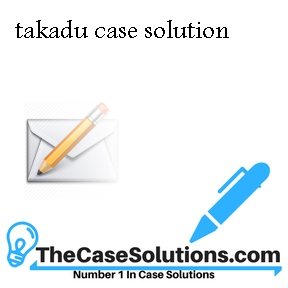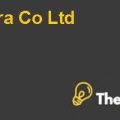TaKaDu Case
Illustrate the concepts of 'derived demand' and 'DMU' using the TaKaDu case.
Derived demand can be described as when the desire for a good or service takes place because of the desire for another good or service. In the TakaDu case, it has been mentioned that as the time passes companies across the world face numerous problems related to water monitoring systems. Companies spend millions of dollars annually to overcome the issues regarding the water management processes. The need for a better water monitoring system is generating across the globe.
Managing the water utilities and usage were tasked by companies with delivering and managing water to consumers and were mutually run by both the private and public sectors or sometimes a mixture of the both. According the available statistics, there were around 250,000 water utility facilities available worldwide that were diverse in sizes and their scopes. As per the statistical data Thames Water, a private water utility company present in the greater London area, had around the 14 million customers and 30,000 kilometers of pipes. In the United States, there were a number of 53,000 community water monitoring systems, more than 80% of which had less than 3,300 clients. In the meantime, around a number of 60 utilities provided their services to the whole country of Australia. Since the companies across the globe has been facing this issues so there are ample chance that the demand will grow for sure and companies’ business of providing these services will flourish. Since, many of the segments had not been penetrated by any such companies so there are enormous chances that the demand will rise.
The abbreviation (DMU) stands for Decision Making Unit. The DMU is a collection or squad of individuals who take part in a buyer decision process. Normally, DMU relates to business or managerial buying decisions rather than to those of relatives for example. There are a handsome number of key players in this procedure namely the initiators, the middle managers, the buyers, the financers, the deciders, the users and the final decision makers or influencers. While buying these complex systems, a company will look into several options along with their pros and cons. TakaDu needs to develop an effective marketing plan and business model to overcome this issue because the decision making unit will have a looked from the technical aspects and financial aspects as well.
Develop the business model of TaKaDu, including the customer value proposition, and the resources that enable this value proposition.
Company description
Amir Peleg graduated from the Hebrew University in 1986. He was a self-illustrated sequential businessman with an obsession for figures analytics. Amir had founded many companies. In 1991, he was the founder member of the Elbit Vision Systems limited. It was an organization that was providing software and hardware solutions to enhance quality control and production effectiveness for fabric producer. In 2000, he established Cash-U limited, which later on became Unipier limited in year 2004; this company was working in mobile device gaming. In 2005, he came up with YaData, a company that analyzed the customer data for the segmentation and behavioral aiming for digital marketing functions, which was sold to Microsoft in the year 2008. On the watch out for his subsequent opportunity, Peleg discovered his rising concentration in clean technologies. He had very little awareness about the industry, but had gone through the reports on future prospects of water clean technology and learned that joint venture capital firms were introducing the investment funds for this field. After some investigations he decided to keep his focus on water technology. Peleg clarified that Israel was insufficient in water so they were trained to welcome it, and he personally didn’t find a lot of companies that were dealing with modern water technologies.
Industry analysis
According to the available statistics, there were around 250,000 water utility facilities available worldwide; which were diverse in sizes and their scopes. As per the statistical data Thames Water, a private water utility company present in the greater London area, had around the 14 million customers and 30,000 kilometers of pipes. In the United States, there were a number of 53,000 community water monitoring systems, more than 80% of which had less than 3,300 clients. In the meantime, around a number of 60 utilities provided their services to the whole country of Australia.
The price to consumers for water services diverse globally relying on how much it would cost to ship and treat water, supervise the infrastructure and if any other additional cost associated to the water itself. A TaKaDu manager noted that the cost to the customer of per cubic meter for water ranged from around $0.20 to several dollars, and these overheads were increasing in the early 21st century, principally due to the increasing energy cost. In United States in 2012, the average cost for 1,000 cubic feet of water or the average monthly amount used by a family had amplified 233% in Atlanta and around ............................
This is just a sample partial case solution. Please place the order on the website to order your own originally done case solution.












